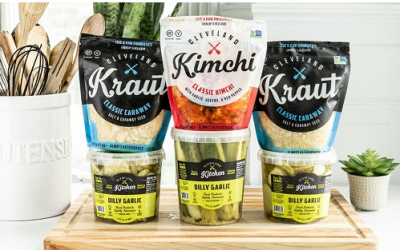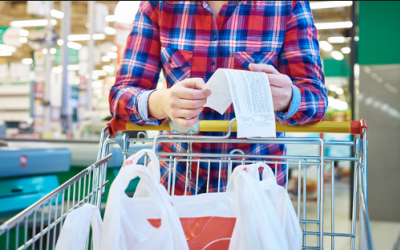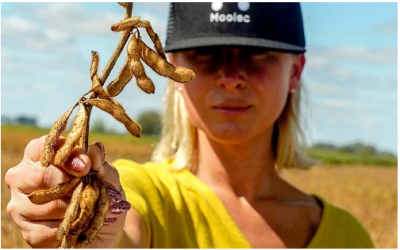“FMCG manufacturers will have to become more adaptive and tap into new consumer behaviours as a result of the pandemic and the current global economic position that is making trade very precarious,” says Euan Jarvie, president EMEA at data analytics and market research company, IRI. Here, Jarvie discusses the inflationary challenges faced by food manufacturers and looks at how they can curb the impact of rising costs and evolving consumer demands.
With huge inflationary measures in place affecting the cost of raw materials, as well as rising energy prices and transport costs, the big CPG businesses have the challenging balancing act of needing to maintain a cost base as efficiently as possible without passing on higher costs through the supply chain.
The major grocery retailers have become the masters of change in difficult times, successfully pivoting to multi-dimensional, multi-format businesses. Two years ago, they were quick to adapt their operations to cope with Covid-19 constraints while accelerating digital transformation efforts, from contactless and digital wallets to checkout-free stores.
If inflation continues to rise to new heights, we will see real pressure on grocery prices. Manufacturers may even decide at some stage that it’s just not cost-effective to make some products in the short term or that there are too many controls on the supply chain. We are already seeing this to an extent post-Brexit with some items becoming difficult to obtain.
We know that brands tend to come into their own when there are significant external pressures, but food manufacturers will still need to minimise their exposure to inflationary forces by ensuring their brands stay relevant.
Changing consumer behaviours
A study of 40 FMCG brands, which formed part of IRI’s inflation analysis earlier this year, indicates those brands that have successfully negotiated past inflationary periods have become more resilient as a result.
They look at challenging times as an opportunity, as consumers re-evaluate their consumption habits and the way they interact with food brands. They invest in understanding those changing needs and behaviours and how they are likely to shift demand and deliver growth opportunities.
As consumers deal with the cost-of-living crisis, new shopping behaviours go beyond just price comparisons and downtrading. Our report shows that consumers are less likely to react to marginal price increases than they are to what we call ‘sticker shock’. A 10% increase in the price of butter is unlikely to immediately change shopper behaviour, but a 50% hike in pasta prices, might.
This reflects the gap between inflation headlines and forecasts, and actual changes in consumer behaviour. It can take three to six months before price increases change purchasing and consumption habits. So manufacturers must tap into other shopper behaviours that influence purchasing decisions beyond prices, such as product quality, added benefits and value.
We have identified 12 new shopping behaviours, from looking at the quantity needed – helped by manufacturers’ propositions – to using less and recycling. Brand equity, such as fairtrade and sustainability, is also important and something many consumers are not prepared to compromise on, even during tough times.
Consumers also purchase in different channels – for example, online, club and discounter – which has implications for brand choices. They change the frequency of their shopping, so rather than the regular weekly shop, they recognise that little and often can lead to better deals. They may even schedule a purchase to when new stock comes in, taking advantage of reduced prices.
They will also reduce the quantity of consumption, with the realisation that less is more. Then there are those who trade up or down, defer purchases or even leave a category altogether, which is where retention strategies come into play. Among low to medium income consumers, for example, we see more trading down and buying on deal, as well as substituting items; while mid to high income consumers are looking for smart deals and to premiumise where justified.
Lessons learnt
Taking lessons from inflation-busting brands, manufacturers can engage better with consumers for new moments and occasions – cooking at home, cooking from fresh, meal kits and ideas, etc. – and in turn, create product propositions and effective promotions to meet these requirements. Consider perhaps that promotions become more about awareness and impact versus the traditional discount and deal.
Brands must also adapt and align their marketing activities, pricing, distribution, revenue management and brand mix to ensure they are in the right place at the right time. This may not be new a concept but successful manufacturers adapt in the short term to remain relevant in the long term. This may mean a hiatus in new product innovation, for example, and reinvesting that money while ensuring they phase innovation in for future recovery.
Most important, consumers will not compromise on the brand promise, which means recognising that important qualities like trust, ethics and reliability are not flexible and remain critically important for a brand to navigate successfully through the current crisis. Consumers will see this commitment as a promise during a time when customers need it most.
The road ahead will not be without its challenges for the industry. Food brands have to evolve faster in their approach as shoppers continue to adapt to the turbulence of the day.




